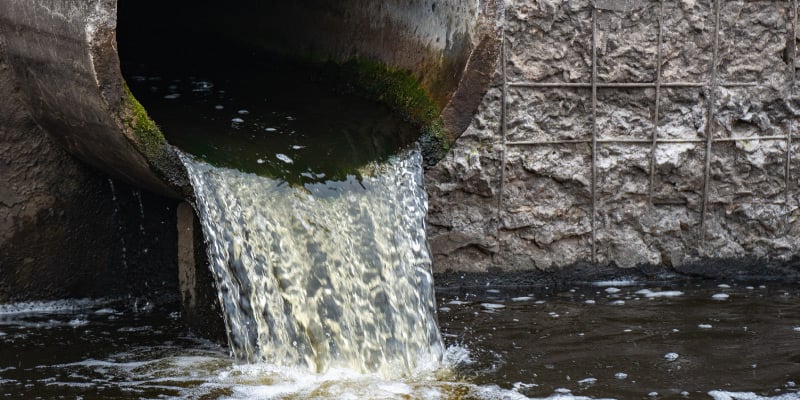Just How Fluid Garbage Disposal Functions: An In-depth Review of Strategies and Technologies Used

Review of Liquid Waste Types
The intricacy of fluid waste kinds demands a detailed understanding of their characteristics and ramifications for disposal. Liquid waste can broadly be classified into a number of kinds, consisting of commercial, metropolitan, farming, and unsafe waste. Each category displays distinct homes, needing particular management strategies to mitigate ecological and health and wellness dangers.
Industrial liquid waste stems from making processes and frequently contains a variety of pollutants, such as heavy steels, solvents, and natural compounds. Municipal fluid waste, mainly comprising wastewater from houses and industrial establishments, has organic matter, nutrients, and virus (industrial wastewater treatment). Agricultural liquid waste, consisting of overflow from farms, might include fertilizers, chemicals, and animal waste, posturing dangers to water quality and ecological communities
Hazardous liquid waste is identified by its poisoning, sensitivity, or potential to trigger harm. Comprehending these varied fluid waste types is important for creating effective disposal techniques and making certain conformity with environmental policies.
Physical Treatment Techniques

Testing is the preliminary step, where bigger bits and debris are removed from the fluid waste utilizing screens or grates. In sedimentation containers, much heavier bits settle at the base, developing a sludge layer, while the clarified fluid can be more dealt with.
Filtration is another crucial technique that includes passing the fluid with porous products, such as sand or membranes, to record smaller fragments. This action enhances the top quality of the liquid, making it ideal for subsequent therapy processes.

Chemical Therapy Techniques
Chemical therapy techniques are crucial for successfully managing fluid waste, especially in resolving dissolved and colloidal impurities that physical techniques may not appropriately eliminate. These techniques use numerous chemical agents to counteract, precipitate, or change hazardous compounds right into less dangerous forms.
One typical approach is coagulation and flocculation, where chemicals such as alum or ferric chloride are contributed to advertise the gathering of suspended fragments. This process enhances sedimentation, permitting for simpler elimination of the resulting sludge. In addition, oxidation procedures, using agents like chlorine or ozone, are employed to break down complicated natural compounds and pathogens, making the waste safer for discharge or further treatment.
Neutralization is one more critical technique, which changes the pH of acidic or alkaline waste streams to neutral degrees, protecting against potential harm to downstream systems and the environment. Additionally, progressed oxidation procedures (AOPs) make use of mixes of oxidants and ultraviolet light to weaken persistent pollutants, achieving a higher level of treatment efficiency.
Biological Treatment Processes
Organic therapy procedures play a vital function in the administration of liquid waste by using bacteria to break down raw material and decrease contaminant levels. These procedures can be generally classified right into cardiovascular and anaerobic treatments, each employing specific microbial communities to attain reliable waste destruction.
Cardiovascular treatment involves the use of oxygen to promote the failure of natural materials by bacteria. This procedure is frequently carried out in triggered sludge systems, where aeration containers supply a favorable environment for microbial development, causing the oxidation of organic pollutants. The resultant biomass can be divided from treated effluent through sedimentation.
On the other hand, anaerobic treatment occurs in the lack of oxygen, depending on different microorganisms to break down natural issue. This method is specifically helpful for high-strength waste, as it generates biogas, an eco-friendly visit power source, while reducing sludge manufacturing. Technologies such as anaerobic digesters are frequently used in commercial and municipal applications.
Both anaerobic and cardiovascular visit this page biological therapies not only decrease the environmental influence of liquid waste yet also promote resource recuperation, making them necessary components of lasting waste management methods. Their effectiveness, flexibility, and effectiveness sustain their widespread execution throughout different markets.
Arising Technologies in Disposal
Ingenious techniques to liquid garbage disposal are rapidly progressing, driven by advancements in innovation and a raising emphasis on sustainability. Among these emerging innovations, membrane layer bioreactors (MBRs) have actually gained traction for their ability to integrate organic therapy with membrane layer filtration, causing high-grade effluent that can be recycled in different applications. MBRs allow smaller sized impacts and more efficient procedures contrasted to typical systems.
Another promising development is making use of anaerobic digestion combined with nutrient healing innovations, which not just deals with fluid waste yet additionally creates biogas and recoups beneficial nutrients like nitrogen and phosphorus. This twin advantage boosts source performance and lowers ecological effect.
Furthermore, progressed oxidation processes (AOPs) are being embraced for the deterioration of complex organic pollutants. These techniques make use of effective oxidants and catalysts to damage down pollutants at the molecular level, offering a very reliable option for difficult waste streams.
Furthermore, the combination of man-made knowledge and artificial intelligence in waste administration systems is optimizing functional effectiveness and predictive upkeep, causing decreased costs and boosted environmental conformity. These modern technologies show a significant change towards even more efficient and sustainable fluid garbage disposal methods.
Final Thought
To conclude, reliable liquid garbage disposal requires an extensive understanding of numerous methods and technologies. The combination of physical, chemical, and biological treatment approaches makes sure the efficient administration of varied waste types. In addition, the development of cutting-edge technologies boosts treatment effectiveness and promotes sustainability Get More Info in waste monitoring practices. By constantly progressing these approaches, it comes to be feasible to deal with the expanding challenges connected with fluid waste, ultimately contributing to environmental management and resource healing.
Liquid waste disposal is a vital facet of environmental management, needing a thorough understanding of various techniques and technologies tailored to various waste kinds. Fluid waste can generally be classified right into numerous kinds, consisting of commercial, local, farming, and harmful waste. Agricultural liquid waste, including overflow from farms, may contain fertilizers, chemicals, and pet waste, posing risks to water quality and communities.
Various physical treatment methods play a critical duty in taking care of fluid waste successfully - industrial wastewater treatment.In final thought, reliable fluid waste disposal demands a thorough understanding of numerous methods and innovations